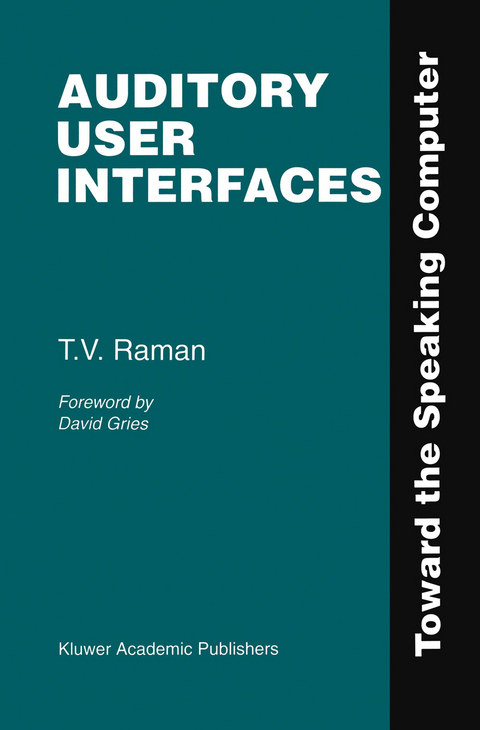
Auditory User Interfaces
Springer (Verlag)
978-0-7923-9984-1 (ISBN)
The author's approach is implemented in two large systems, ASTER - a computing system that produces high-quality interactive aural renderings of electronic documents - and Emacspeak - a fully-fledged speech interface to workstations, including fluent spoken access to the World Wide Web and many desktop applications. Using this approach, developers can design new high-quality AUIs.
Auditory interfaces are presented using concrete examples that have been implemented on an electronic desktop. This aural desktop system enables applications to produce auditory output using the same information used for conventional visual output.
Auditory User Interfaces: Toward the Speaking Computer is for the electrical and computer engineering professional in the field of computer/human interface design. It will also be of interest to academic and industrial researchers, and engineers designing and implementing computer systems that speak. Communication devices such as hand-held computers, smart telephones, talking web browsers, and others will need to incorporate speech-enabling interfaces to be effective.
1. Speech-Enabled Applications.- 1.1 Introduction.- 1.2 What is UI?.- 1.3 Alternative Modes of Interaction.- 1.4 Retrofitting Spoken Interaction.- 1.5 The Speech-enabling Approach.- 1.6 Separating Computation From User Interface.- 2. Nuts and Bolts of Auditory Interfaces.- 2.1 Introduction.- 2.2 Speech Synthesis.- 2.3 Speech Recognition.- 2.4 Digital Signal Processing Techniques.- 2.5 Auditory Displays And Audio Formatting.- 2.6 Interactive User Interface Development.- 3. The Audio Desktop.- 3.1 Introduction.- 3.2 The Visual Desktop.- 3.3 Conversational Gestures.- 3.4 Choosing Abstractions For The Audio Desktop.- 4. Concrete Implementation of an Audio Desktop.- 4.1 Introduction.- 4.2 Basic Services For Speech-enabling The Desktop.- 4.3 The Emacspeak Desktop.- 4.4 Speech-enabled Editing Tools.- 4.5 Structured Editing And Templates.- 4.6 Browsing Structured Information.- 4.7 Information Management On The Audio Desktop.- 4.8 Speech-enabled Messaging Tools.- 4.9 Editing Program Source.- 4.10 Software Development Environment.- 4.11 Technique Used To Speech-enable Emacs.- 4.12 Thanking The Emacs Community.- 5. Speech-Enabling The WWW.- 5.1 Introduction.- 5.2 Aural Information Access.- 5.3 Web Surfing Without A Monitor.
| Erscheint lt. Verlag | 31.8.1997 |
|---|---|
| Zusatzinfo | XXIII, 142 p. |
| Verlagsort | Dordrecht |
| Sprache | englisch |
| Maße | 155 x 235 mm |
| Themenwelt | Mathematik / Informatik ► Informatik ► Betriebssysteme / Server |
| Informatik ► Software Entwicklung ► User Interfaces (HCI) | |
| ISBN-10 | 0-7923-9984-6 / 0792399846 |
| ISBN-13 | 978-0-7923-9984-1 / 9780792399841 |
| Zustand | Neuware |
| Haben Sie eine Frage zum Produkt? |
aus dem Bereich


